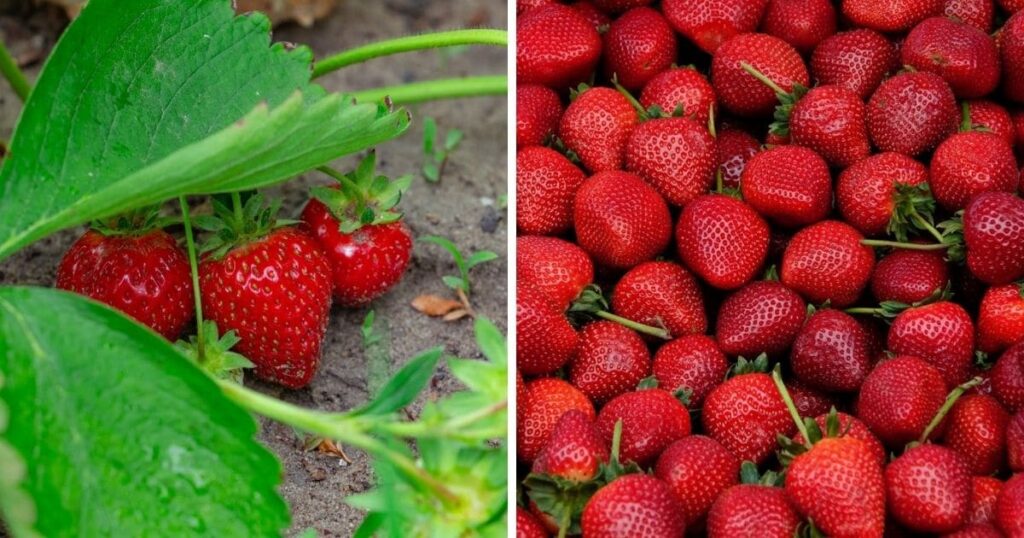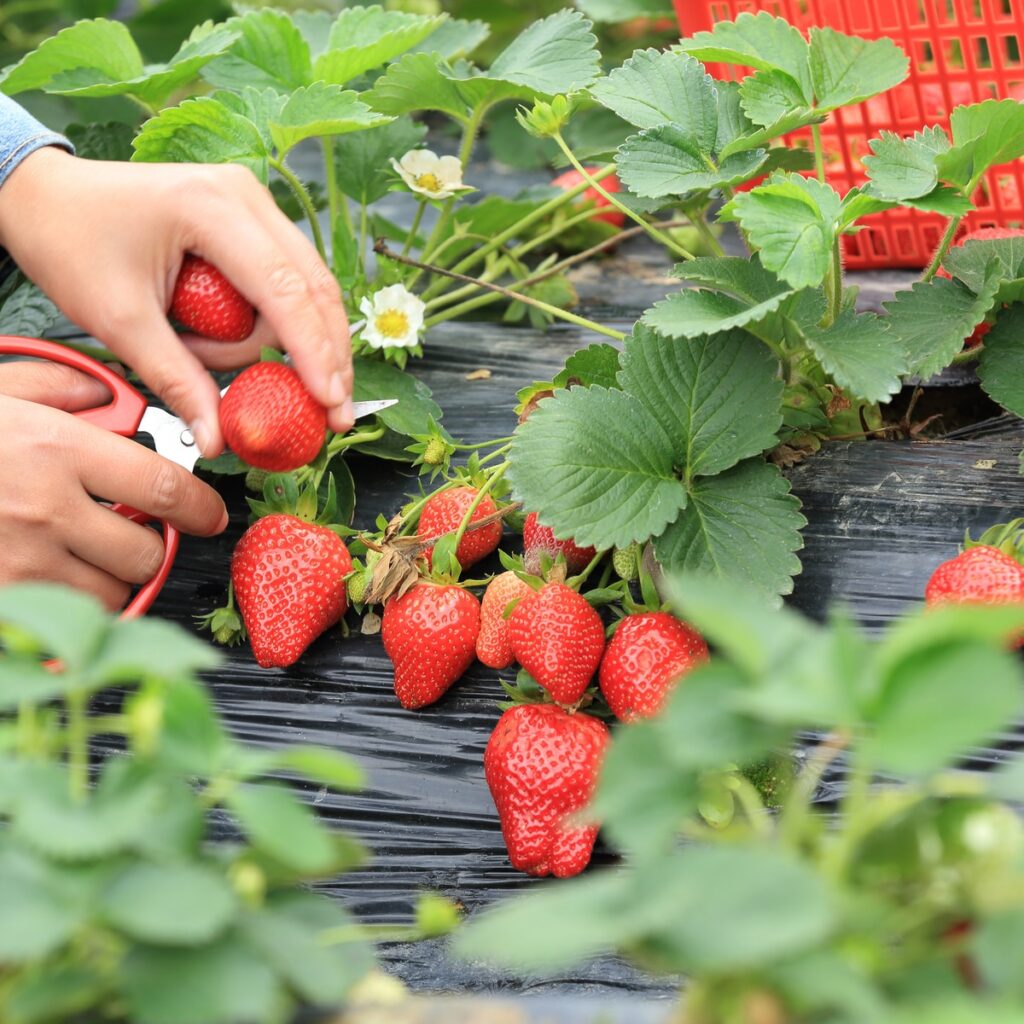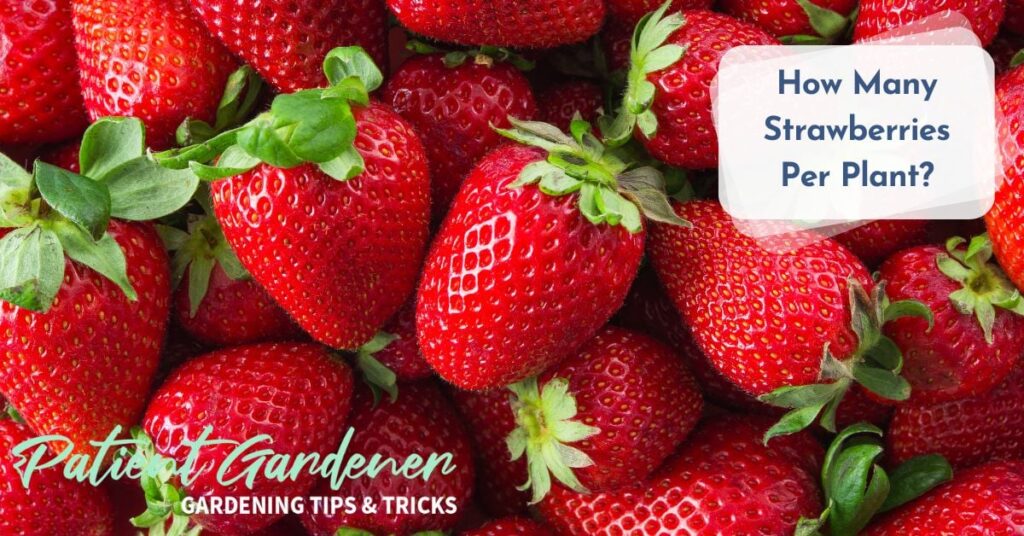In this article, you will explore the intriguing question of how many strawberries are produced per plant. Understanding the yield of strawberries per plant is essential for farmers, researchers, and consumers alike, as it provides valuable insights into the productivity and potential profitability of strawberry cultivation. By examining various factors such as cultivar selection, growing conditions, and proper care, this article aims to shed light on the average strawberry yield per plant and the factors that influence it. So, let us embark on this enlightening journey to uncover the fascinating world of strawberry cultivation and its fruitful outcomes.
Factors influencing strawberry production
Strawberry production is influenced by various factors that contribute to the overall success and productivity of the crop. These factors include variety selection, planting density, fertilization, irrigation, pollination, climate, disease and pest management, pruning, harvesting, and other cultural practices. Each of these factors plays a crucial role in determining the quality and quantity of strawberries produced per plant.

Variety selection
The choice of strawberry variety has a significant impact on the overall production of the crop. There are different types of strawberry varieties, including June-bearing varieties, everbearing varieties, and day-neutral varieties. Each type has its own unique characteristics and growth patterns.
June-bearing varieties
June-bearing varieties are known for producing a high yield of strawberries during a specific period, usually in June. They require a longer day length to initiate flower buds and tend to bear fruit for a concentrated period, making them suitable for commercial production. Some popular June-bearing varieties include ‘Chandler’, ‘Allstar’, and ‘Earlibrite’.
Everbearing varieties
Everbearing varieties, as the name suggests, have the ability to produce strawberries throughout the growing season. They typically produce a smaller yield compared to June-bearing varieties, but the fruiting season is more spread out. This characteristic makes everbearing varieties suitable for home gardens and small-scale production. Examples of everbearing varieties include ‘Seascape’, ‘Fern’, and ‘Albion’.
Day-neutral varieties
Day-neutral varieties are unique as they can produce strawberries continuously regardless of the day length. These varieties are particularly suitable for regions with a mild climate or for greenhouse production. Examples of day-neutral varieties include ‘Tristar’, ‘Seascape’, and ‘Fort Laramie’. The choice of variety should be based on the specific requirements and constraints of the production system.
Planting density
Planting density refers to the arrangement and spacing of strawberry plants within a field or garden. Determining the optimal planting density is essential for maximizing yield and promoting proper plant growth.
Determining spacing
The spacing between strawberry plants is dependent on several factors, including the variety, type of cultivation system, and environmental conditions. In general, a spacing of 12-18 inches between plants in a row and 3-4 feet between rows is recommended for most strawberry varieties. This allows sufficient airflow and sunlight penetration, reducing the chances of disease development and improving overall plant health.
Planting methods
There are different planting methods that can be used when establishing a strawberry crop. These methods include bare-root planting, plug planting, and transplanting. Bare-root planting involves placing dormant strawberry plants directly into the soil, while plug planting uses young seedlings grown in containers. Transplanting involves moving established plants from one location to another. The choice of planting method depends on factors such as cost, availability of planting material, and time of planting.

Fertilization
Proper fertilization is crucial for promoting vigorous plant growth and maximizing strawberry production. It is important to assess the nutrient requirements of strawberry plants through soil testing and select appropriate fertilizers and application methods.
Soil testing
Before applying fertilizers, soil testing should be conducted to determine the nutrient status of the soil. This helps identify any deficiencies or excesses of essential nutrients. Soil samples are collected from different parts of the field and sent to a laboratory for analysis. Based on the results, a fertilizer program can be developed to meet the specific needs of the crop.
Nutrient requirements
Strawberry plants require various nutrients for healthy growth and fruit development. The primary macronutrients include nitrogen (N), phosphorus (P), and potassium (K), while secondary macronutrients include calcium (Ca), magnesium (Mg), and sulfur (S). Additionally, micronutrients such as iron (Fe), manganese (Mn), zinc (Zn), copper (Cu), boron (B), and molybdenum (Mo) are also essential for proper plant functioning. The nutrient requirements can vary depending on the stage of growth and the specific variety being cultivated.
Types of fertilizers
There are different types of fertilizers that can be used to provide the necessary nutrients to strawberry plants. These include organic fertilizers, such as compost and manure, as well as synthetic fertilizers, such as nitrogen-phosphorus-potassium (NPK) blends. Organic fertilizers tend to release nutrients slowly and improve soil health, while synthetic fertilizers provide a quick nutrient boost. The choice of fertilizer depends on factors such as availability, cost, and specific nutrient requirements.
Application methods
Fertilizers can be applied using various methods, including broadcasting, side-dressing, and fertigation. Broadcasting involves spreading the fertilizer evenly over the soil surface, while side-dressing involves placing the fertilizer in a band along the row, away from the plant stems. Fertigation is a method that combines irrigation and fertilization, where soluble fertilizers are injected into the irrigation system. The choice of application method depends on the specific needs of the crop and the available resources.
Irrigation
Adequate irrigation is essential for ensuring proper plant growth, fruit development, and overall productivity of strawberry plants. Water requirements vary depending on environmental conditions, soil type, and plant stage.
Water requirements
Strawberry plants have different water requirements throughout their growth cycle. During the establishment phase, it is important to provide sufficient water to aid root development. Once the plants start flowering and fruiting, water requirements increase to support fruit development. However, excessive moisture can lead to root rot and other diseases. Therefore, it is important to monitor soil moisture levels and avoid both over-irrigation and under-irrigation.
Irrigation systems
There are several irrigation systems that can be used for strawberry production, including drip irrigation, overhead sprinklers, and micro-sprinklers. Drip irrigation is a popular method as it delivers water directly to the root zone, minimizing water loss and reducing the risk of foliar diseases. Overhead sprinklers provide uniform coverage to larger areas but can lead to increased moisture on the foliage. Micro-sprinklers are a compromise between drip irrigation and overhead sprinklers, providing uniform water distribution while minimizing foliar wetness. The choice of irrigation system depends on factors such as water availability, cost, and crop needs.

Pollination
Pollination is a critical factor in strawberry production as it ensures proper fruit set and development. Strawberries can be pollinated through natural means, hand pollination, or the use of pollinators.
Natural pollination
Strawberries are primarily pollinated by bees, especially honeybees and bumblebees. These insects visit the flowers in search of nectar and inadvertently transfer pollen from the male to the female parts of the flowers. Providing suitable habitat and forage resources for bees can enhance natural pollination and increase fruit set.
Hand pollination
Hand pollination can be utilized in situations where natural pollination is inadequate or as a means of ensuring specific cross-pollination. This method involves manually transferring pollen from the stamens of male flowers to the pistils of female flowers using a small brush or cotton swab. It requires careful observation and manual intervention to ensure successful pollination.
Use of pollinators
In addition to natural pollination and hand pollination, the use of managed pollinators, such as honeybee colonies, can significantly improve pollination efficiency. These colonies are placed in or near the strawberry fields, where the bees actively forage for nectar and pollen. Increased pollinator activity leads to higher fruit set and improved berry quality.
Climate
Climate plays a vital role in strawberry production, affecting growth, reproductive development, and fruit quality. Several factors within the climate, such as temperature and sunlight, influence strawberry plant performance.
Temperature
Strawberries have specific temperature requirements for optimal growth and fruiting. Cooler temperatures during the establishment phase promote root development, while warmer temperatures during flowering and fruiting enable proper fruit set and development. Extreme temperatures, both cold and hot, can negatively impact plant growth and reduce yields. Frost and heat stress can cause flower damage or fruit deformities. Therefore, it is important to select strawberry varieties that are adapted to the local climate and implement measures to protect the plants from extreme temperatures when necessary.
Sunlight
Sunlight is essential for photosynthesis, the process by which plants convert light energy into chemical energy to support growth and fruit production. Strawberries require a minimum of six hours of direct sunlight per day to develop properly and produce high-quality fruit. Insufficient sunlight can lead to weak plants, poor fruit set, and reduced yields. It is important to consider the shading effects of nearby structures or plants when selecting the planting site.
Temperature and sunlight interaction
Temperature and sunlight interact in influencing strawberry production. Optimal temperature conditions combined with sufficient sunlight can promote vigorous growth and increase photosynthetic activity, leading to higher fruit yields. In contrast, temperature extremes combined with inadequate sunlight can result in physiological disorders, reduced flowering, and poor fruit quality. Monitoring and managing the temperature and sunlight aspects of the growing environment are critical for maximizing strawberry production.

Disease and pest management
Managing diseases and pests is crucial for maintaining healthy strawberry plants and maximizing fruit production. There are several common diseases and pests that can affect strawberry crops.
Common diseases and pests
Diseases such as gray mold (Botrytis cinerea), leaf spot (Mycosphaerella fragariae), and powdery mildew (Podosphaera aphanis) can cause significant damage to strawberry plants and fruits. Common pests include aphids, spider mites, strawberry weevils, and slugs. The presence of these diseases and pests can negatively impact plant productivity, reduce fruit quality, and potentially lead to crop losses.
Preventive measures
Implementing preventive measures is essential for disease and pest management in strawberry production. These measures include selecting disease-resistant varieties, ensuring proper crop rotation, maintaining good sanitation practices, and monitoring the crop for early signs of disease or pest infestation. By implementing preventive strategies, growers can reduce the reliance on chemical pesticides and create a more sustainable production system.
Control methods
If disease or pest pressure becomes significant, control methods may be necessary to protect the crop. Depending on the specific disease or pest, control methods can include cultural practices, such as removing infected plants or providing proper plant spacing, as well as the use of biological controls, such as beneficial insects or microbial agents. In some cases, chemical pesticides may be required, but their use should be judicious and in accordance with safe application practices.
Pruning
Pruning is an important cultural practice in strawberry production that helps maintain plant health, improve fruit quality, and increase yields. Proper timing and techniques are key to successful pruning.
Pruning objectives
The main objectives of pruning are to remove old, diseased, or damaged plant material, promote airflow and light penetration, control plant size, and stimulate the production of new runners (daughter plants). By removing unwanted plant material, pruning reduces the risk of disease development and enhances the overall vigor of the plants.
Timing
The timing of pruning depends on the specific strawberry variety being cultivated and the region’s climate. In general, pruning is conducted during the dormant season, either in late winter or early spring, before new growth emerges. This allows the plants to recover from pruning and promotes healthy regrowth.
Techniques
Pruning techniques vary depending on the specific objectives and the growth habit of the strawberry variety. Common pruning techniques include removing old leaves and runners, thinning the plant canopy to improve sunlight penetration, and cutting back flower stalks after fruiting. It is important to use sharp and clean pruning tools to minimize injury to the plants and reduce the spread of diseases.

Harvesting
Harvesting strawberries at the right stage of ripeness ensures optimal flavor, texture, and shelf life. Proper harvesting techniques help maintain fruit quality and prolong post-harvest storage.
Strawberries are typically harvested when they reach full color and are fully mature. Some varieties may have specific color requirements, such as bright red or deep red, depending on consumer preferences and market demands. The berries should be firm and free from any signs of damage, such as rot or insect infestation.
Harvesting techniques include carefully picking the ripe berries by hand, leaving the stem attached to the fruit. This minimizes bruising and extends the shelf life of the harvested berries. It is important to handle the berries gently to avoid damaging the fruit. Harvested strawberries should be promptly cooled to maintain freshness and quality.
Other cultural practices
In addition to the factors mentioned above, there are other cultural practices that contribute to successful strawberry production.
Mulching
Mulching is a common practice in strawberry production that involves covering the soil around the plants with a layer of organic or synthetic material. Mulches help conserve soil moisture, suppress weed growth, and regulate soil temperature. Organic mulches, such as straw or wood chips, also provide some level of protection against soil-borne diseases.
Weed control
Weed control is crucial in strawberry production as weeds compete with the plants for resources, such as water, sunlight, and nutrients. Manual methods, such as hand weeding or hoeing, can be employed, but they require significant labor input. Herbicides labeled for use in strawberries can be used for more efficient weed control, but it is important to follow label instructions and observe safety precautions.
Renovation
Renovation is a practice typically done after the harvest season to rejuvenate strawberry plants and promote healthy regrowth. This involves removing old foliage, cutting back the plants to a certain height, and removing excess runners. Renovation helps maintain plant vigor and encourages the development of new runners for the next growing season.
Crop rotation
Crop rotation is an effective way to manage soil-borne diseases and maintain soil fertility. It involves growing strawberries in different areas of the field or garden in consecutive years to prevent the build-up of pathogens and pests. By rotating strawberries with other non-susceptible crops, the risk of disease transmission is reduced, and soil health is improved.
In conclusion, successful strawberry production is influenced by a multitude of factors. The choice of variety, planting density, fertilization, irrigation, pollination, climate conditions, disease and pest management, pruning practices, and other cultural practices all contribute to the overall productivity and quality of strawberries. By carefully considering and implementing these factors, growers can maximize strawberry yields, enhance fruit quality, and contribute to a sustainable and profitable strawberry production system.



